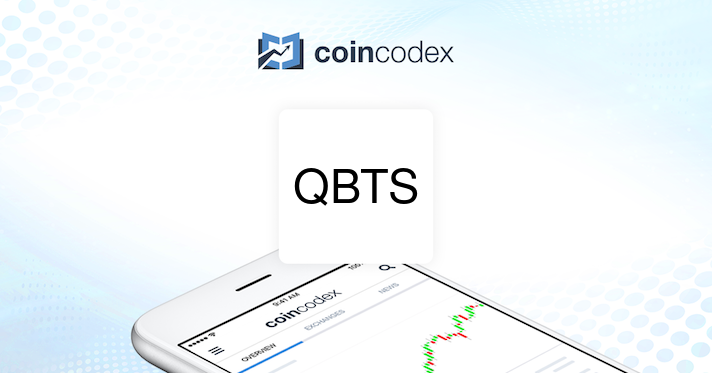Is Clean Energy's Growth Sustainable? Examining Current Threats

Table of Contents
Intermittency and Grid Instability
The inherent variability of renewable energy sources like solar and wind power presents a major challenge to grid stability. This is a critical threat to clean energy's sustainable growth.
The Challenge of Variable Energy Sources
Solar and wind power generation fluctuates dramatically depending on weather conditions. This intermittency creates several problems:
- Lack of sufficient energy storage capacity leads to grid instability and potential blackouts. When the sun sets or the wind dies down, a reliable backup power source is essential to maintain a consistent energy supply. Current energy storage solutions, while improving, are often insufficient to meet this demand.
- Balancing intermittent renewable energy sources with traditional power plants is complex and costly. Grid operators must carefully manage the energy mix, constantly adjusting output from fossil fuel plants to compensate for fluctuations in renewable energy generation. This complex balancing act requires sophisticated forecasting and control systems.
- Advancements in battery technology and smart grids are crucial for mitigating intermittency issues. Significant investment in large-scale energy storage solutions, such as pumped hydro storage, advanced battery technologies, and compressed air energy storage, is needed. Smart grids, utilizing advanced sensors and data analytics, can optimize energy distribution and improve grid stability.
Investing in Grid Modernization
Upgrading our aging energy infrastructure is paramount for integrating renewable energy sources reliably and efficiently. This requires substantial investment in:
- Aging grid infrastructure in many regions is ill-equipped to handle the demands of renewable energy integration. Many grids were designed for a centralized power generation model and struggle to cope with the decentralized nature of renewable energy sources.
- The high cost of grid modernization can be a barrier to widespread renewable energy adoption. Upgrading transmission lines, substations, and implementing smart grid technologies are expensive undertakings requiring significant upfront investment.
- Government policies and incentives are essential to drive investment in grid modernization. Regulatory frameworks that encourage private investment and streamline the permitting process for grid upgrades are crucial to accelerate this essential infrastructure development.
Resource Availability and Land Use
The sustainable growth of clean energy is also constrained by the availability of resources and the land required for renewable energy projects.
Geographic Limitations of Renewable Resources
The suitability of locations for large-scale renewable energy projects is geographically limited.
- Competition for land use between renewable energy projects and other land uses (agriculture, conservation) can create conflicts. Finding suitable locations for large-scale solar and wind farms often necessitates balancing energy needs with other land use priorities.
- The environmental impact of large-scale renewable energy projects (habitat disruption, visual impact) needs careful consideration. Careful environmental impact assessments and mitigation strategies are crucial to minimize the negative consequences of renewable energy development.
- Strategic land use planning is essential to optimize the deployment of renewable energy while minimizing environmental impacts. Careful planning, including the identification of suitable locations and the implementation of appropriate environmental safeguards, is essential.
Material Scarcity and Supply Chains
Manufacturing renewable energy technologies requires specific materials, raising concerns about resource scarcity and ethical sourcing.
- Ensuring sustainable and ethical sourcing of materials is crucial for the long-term sustainability of the clean energy sector. Mining practices should be environmentally responsible and socially equitable to avoid negative impacts on communities and ecosystems.
- Developing recycling and reuse strategies for components of renewable energy technologies will minimize reliance on new resources. Circular economy principles are essential to reduce the environmental footprint of renewable energy production.
- Investing in research and development of alternative materials is necessary to reduce reliance on scarce resources. Innovation in materials science can help to develop more sustainable and readily available alternatives for renewable energy technologies.
Economic and Political Barriers
Economic and political factors significantly influence the adoption and sustainable growth of clean energy.
High Upfront Costs and Financing Challenges
The initial investment required for renewable energy projects can be substantial.
- Securing financing for large-scale renewable energy projects requires favorable government policies and investor confidence. Government support through subsidies, tax credits, and loan guarantees is essential to attract investment.
- Government subsidies and tax incentives are often crucial to making renewable energy projects economically viable. These incentives can help bridge the gap between the upfront costs of renewable energy and the long-term benefits.
- Reducing the cost of renewable energy technologies through innovation and economies of scale is essential. Technological advancements and mass production can drive down the cost of renewable energy technologies, making them more competitive with traditional energy sources.
Political Instability and Policy Uncertainty
Changes in government policies can create uncertainty for investors.
- Stable and supportive government policies are crucial for attracting investment in the clean energy sector. Long-term policy commitments create a stable investment climate and encourage long-term planning.
- International cooperation is vital to accelerate the global transition to clean energy. Global collaboration is needed to share best practices, coordinate policy, and promote technology transfer.
- Addressing political resistance to renewable energy adoption through public education and awareness campaigns is critical. Public education is key to building support for clean energy policies and overcoming misconceptions about renewable energy technologies.
Conclusion
The transition to a sustainable energy future powered by clean energy is a vital undertaking, but significant challenges remain. Addressing the interconnected issues of intermittency, resource limitations, and economic and political barriers is crucial. Overcoming these threats requires a collaborative and multi-faceted approach, including technological innovation, strategic planning, supportive government policies, and international cooperation. Investing in smart grid technologies, sustainable material sourcing, robust financing mechanisms, and public education will unlock the full potential of clean energy. Let's work together to accelerate the widespread adoption of clean energy solutions and build a truly sustainable energy future.

Featured Posts
-
 Is Drier Weather Finally In Sight A Look At The Forecast
May 21, 2025
Is Drier Weather Finally In Sight A Look At The Forecast
May 21, 2025 -
 Kamerbrief Certificaten Abn Amro Programma Overzicht En Verkooptips
May 21, 2025
Kamerbrief Certificaten Abn Amro Programma Overzicht En Verkooptips
May 21, 2025 -
 Is D Wave Quantum Inc Qbts The Best Quantum Computing Stock
May 21, 2025
Is D Wave Quantum Inc Qbts The Best Quantum Computing Stock
May 21, 2025 -
 Abn Amro Zijn Nederlandse Huizen Betaalbaar De Geen Stijl Reactie
May 21, 2025
Abn Amro Zijn Nederlandse Huizen Betaalbaar De Geen Stijl Reactie
May 21, 2025 -
 Experience Coldplay Music Lights And A Message Of Love At Their Number One Show
May 21, 2025
Experience Coldplay Music Lights And A Message Of Love At Their Number One Show
May 21, 2025
Latest Posts
-
 Jalkapallo Friis Paljastaa Avauskokoonpanonsa Kamara Ja Pukki Sivussa
May 21, 2025
Jalkapallo Friis Paljastaa Avauskokoonpanonsa Kamara Ja Pukki Sivussa
May 21, 2025 -
 Benjamin Kaellman Huuhkajien Uusi Taehti
May 21, 2025
Benjamin Kaellman Huuhkajien Uusi Taehti
May 21, 2025 -
 Friisin Avauskokoonpano Kamara Ja Pukki Vaihtopenkillae
May 21, 2025
Friisin Avauskokoonpano Kamara Ja Pukki Vaihtopenkillae
May 21, 2025 -
 Friisin Avauskokoonpano Kamaran Ja Pukin Tilanne Selvillae
May 21, 2025
Friisin Avauskokoonpano Kamaran Ja Pukin Tilanne Selvillae
May 21, 2025 -
 Die Architektin Bestimmt Die Finale Form Am Bau
May 21, 2025
Die Architektin Bestimmt Die Finale Form Am Bau
May 21, 2025
